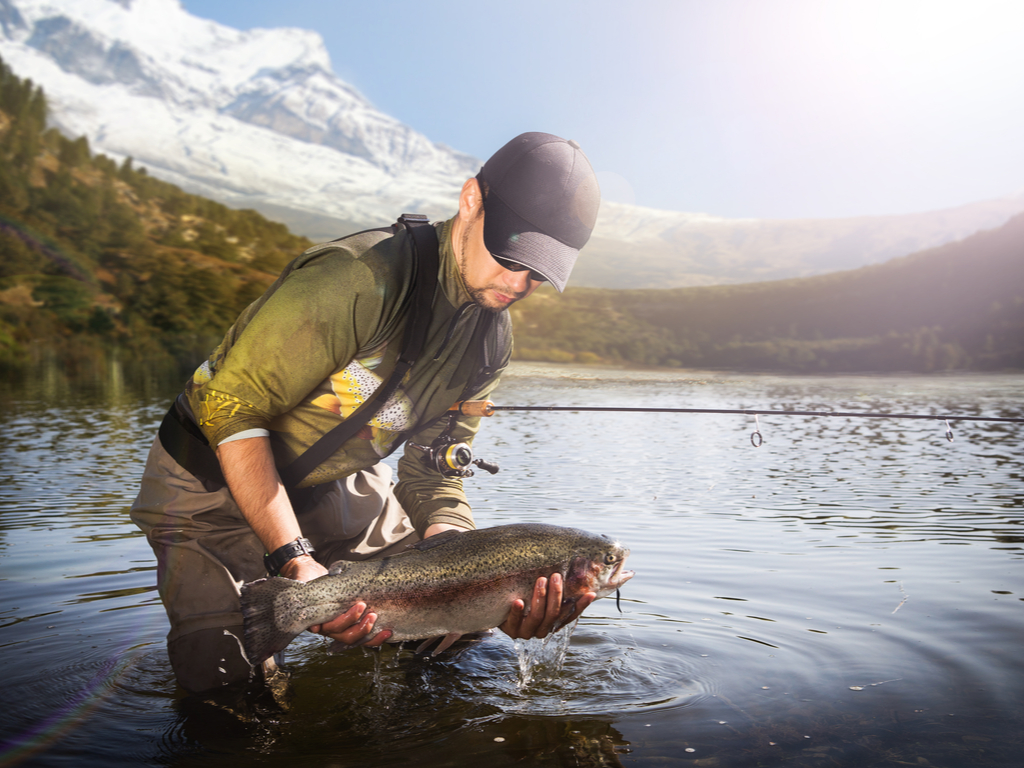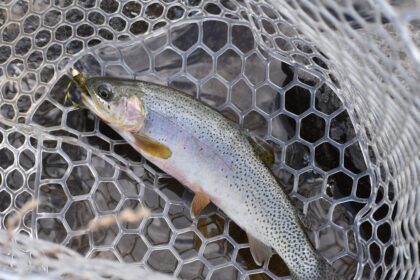You’ve probably driven by many gorgeous mountain lakes and seen the picturesque scenes of people casting fishing lines into lakes, waiting for an unwary trophy fish to nibble. And you may have wondered about the best way to get started trout fishing. Can you catch trout in a lake?
Yes, there are a lot of ways you can catch trout in a lake – but for beginners, we will save you some time and agony and just narrow it down to the three best methods which are: power bait fishing, bait fishing with a worm, and flyfishing with a spinning rod.
You can thank us later for the countless hours we saved you, and in this one article we’ll give you a quick rundown on each of these methods, and if you stick around till the end, we’ll even throw in 3 Trout Fishing Bonus Tips for you.
Now, let’s get started!
QUICK NOTE: To keep things simple as you get started, we’ll going to assume you’re fishing from shore. We will cover boat techniques in a separate post.
What Tackle Do I Need?
To begin with, there’s some necessary gear that you’re going to want to get your hands on before you start. This includes:
Rods
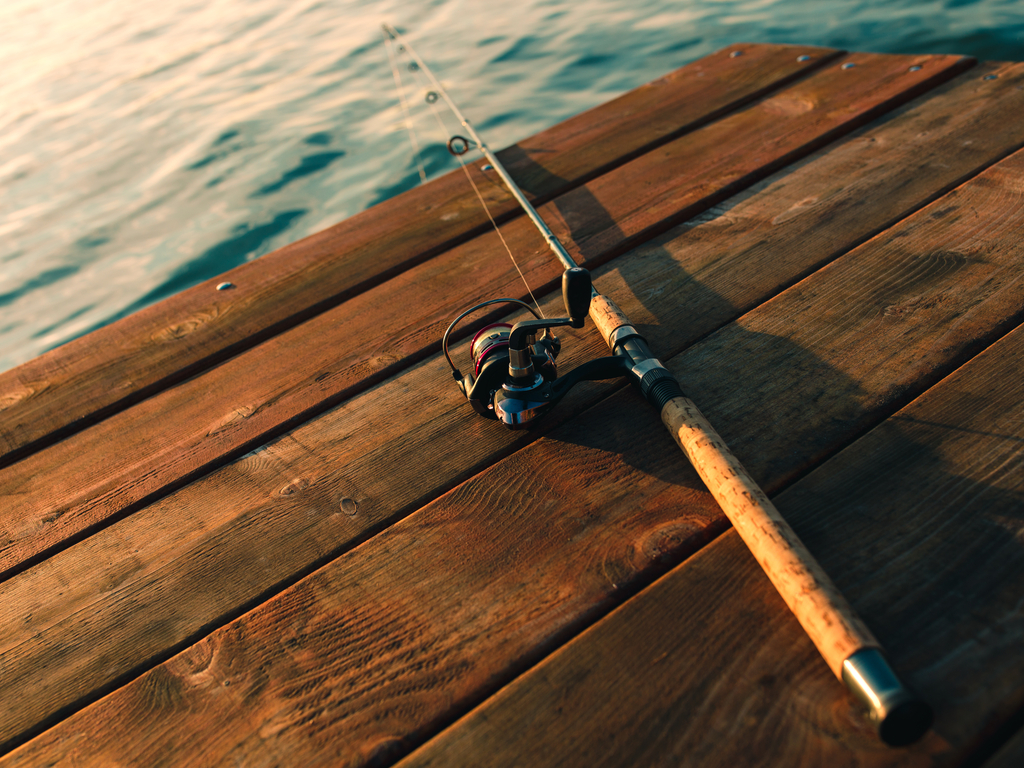
Firstly, you need to have the right rod. We generally recommend a spinning rod that has a casting weight between 10 and 40 grams. Then, you should ensure that it is 6.5 to 9 feet in length and rated for up to at least 8lb line strength.
The rod should have a progressive/ medium action as this would stop the hook from pulling out of the mouth of the trout, along with ensuring that the bait will not fall off the hook during the cast. St. Crois and G. Loomis are some of the top-of-the-line manufacturers around, while Cadence and Okuma are more of a “value” manufacture.
Reels

Then, you will need a good open-face spinning reel which is between 2500 and 3000 inches. This is so that it can remain light whilst still holding enough line. This is to make sure you can reach wherever you need in the lake. If you skimp here chances are your line won’t go as far as you need, when you need it to most.
Alternatively, you might look for a free spool-style reel. This advanced reel contains a second clutch which is activated by a lever that is typically located at the rear of the reel. This allows the trout to take the bait, freely taking the line from the spool whilst under a pre-set tension.
Be sure to go with a reliable manufacture that will give you a reel that will last a long time and save you a lot of performance headaches. Great manufactures for trout reels include Shimano, Penn, KastKing, and Pflueger.
Line
We recommend a monofilament line for trout fishing in a lake, which has breaking strains between six and eight pounds. This is because this sort of line provides enough strength for dealing with lure fishing and legering tactics, whilst remaining relatively light.
Weights
To get the most out of trout fishing, you should use an inline bullet lead of between 20 grams and one ounce in weight. This is because the chance of tangles is reduced whilst providing a streamlined rig presentation. But the truth is weights aren’t expensive and I like the carry a variety with me for all occasions. Find a good assortment in a variety pack and bring it with you.
Depending on conditions, however, you may want to change the weight of the lead. For example, during windier conditions, you should use a heavier rig to keep it anchored.
Hooks
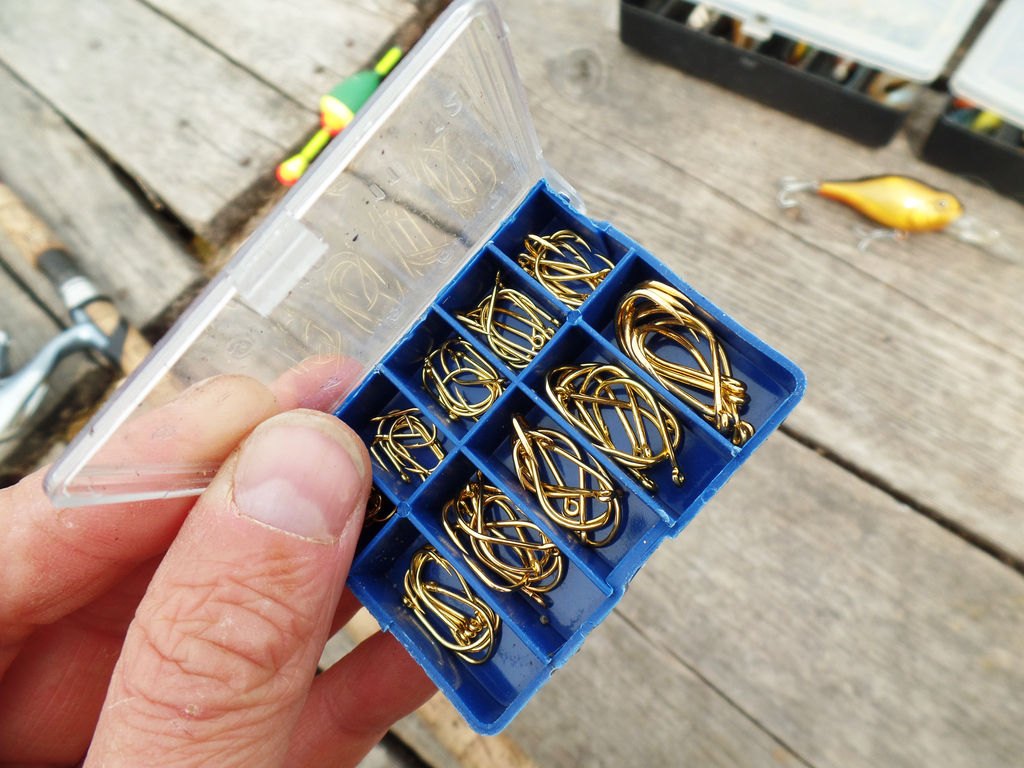
For hooks, we recommend two types: treble hooks and single hooks.
Treble hooks are welded to the shank of the hook via three hook points. This is commonly used alongside Power bait, which is molded around the hook and is usually around size 12 to 14.
This ensures that the hold is stronger and that the bait does not dislodge from the impact of hitting the water. If you choose to use a treble hook, you should go for a trout dough treble.
Single hooks are a good alternative to treble hooks, as they have one hook point, making them ideal for use alongside a variety of baits. Typically, you will find this type of hook used for maggots, mice tails, and worms. The most popular and commonly used worm hook has two barbs at the end of the shank which holds the worm in place. Size-wise, you should look for:
- Maggot hook: Sizes 10, 12, and 14
- Mice tails: Size 10 and 12
- Worm hook: Sizes 10, 12, and 14
Swivels
The purpose of swivels is to create a connection between lines, along with reducing line-twist. Line-twist can happen on the majority of monofilament lines during casting, playing, and retrieving fish. As such, to avoid any unwanted tangles we recommend using a swivel sized either 8 or 10.
Hook Length
Finally, you will need a fluorocarbon hook length. When you are legering, you should use a hook length which is a lighter breaking strain than your mainline, and fluorocarbon is a good option for this as it has low visibility properties. Another benefit of this is that if you lose a fish due to the line breaking then you will not lose your entire rig.
Power Bait Fishing
One of the most popular methods for catching trout in a lake is by fishing with power bait. This is used in lakes where trout are stocked due to the fact that they have been raised on this food and, as such, will eat it up.
When using power bait fishing, pink, rainbow, and purple seem to perform best – in that order.
To fish using power bait, you will need to use two drooper knots to tie two hooks about a foot apart.
Then, tie your weight to the bottom of your line. You should try two different colors of power bait to each and see which performs better.
The weight at the bottom will keep your power bait from floating from the bottom of the lake and away from any weeds. If the weeds are really bad or the lake is shallow, or you’re fishing the shallows (like under trees) you can add a bobber a couple of feet up above the bait and let it sit with some luck.
Top tip: to avoid line twists you can even add a barrel swivel just above your drooper knots.
Bait Fishing with a Worm
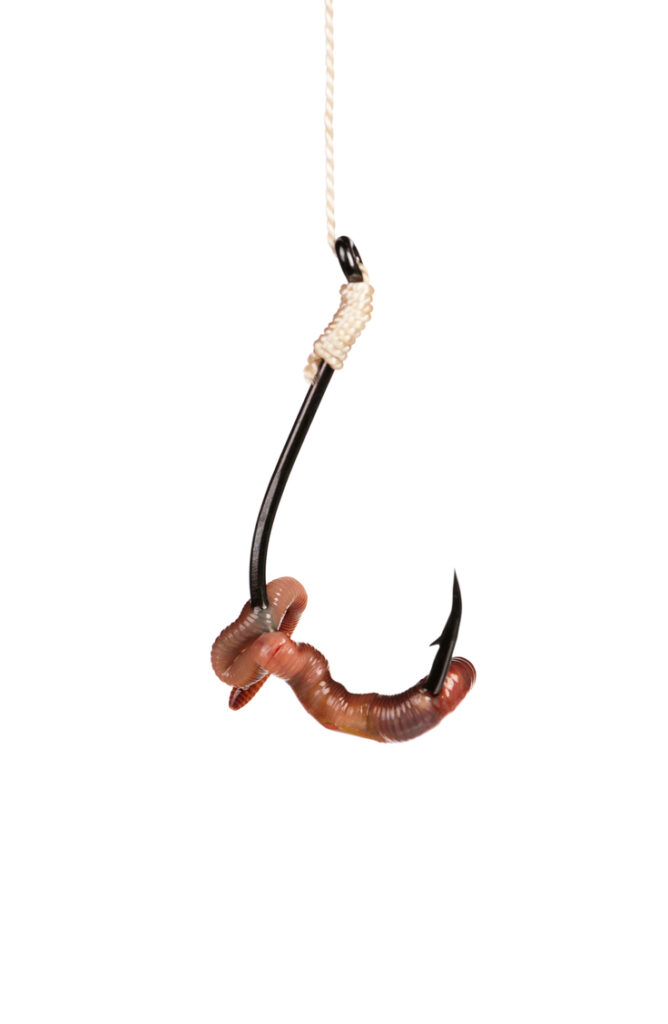
A favorite rig is using a simple barrel swivel tied onto the line with a sliding torpedo bubble above it.
You can fill this with a small amount of water to get some weight for casting, and then give yourself about three feet of the line below the swivel to a hook with a worm on it. Then, cast it out.
The torpedo bubble will give you enough weight to cast a mile, keep your bait up off the bottom of the lake, and then allow the worm to sink down below the surface.
For the best results, we recommend using nightcrawlers from the bait shop. This is a popular worm amongst anglers as not only does it offer plenty of movement, but it also adds an alluring scent to the water which most trout simply cannot resist. Sometimes I’ll add some Powerbait Trout attractant to the nightcrawler with good luck.
Top tip: for the best presentation, use a worm threader.
Flyfishing with a Spinning Rod
YES! You heard it right, and maybe heard it here first! Flyfishing with a spinning rod is one of the most underused methods for catching trout in a lake. This method is best during the morning and evening.
To flyfish with a spinning rod, you should use a torpedo adjustable bubble filled with a small amount of water. Then, you should tie a two-to-three-inch fly behind it.
The best wet flies to use are black gnats, adams, renegades, muddler minnows, and brown bears. Alternatively, ask your local fly shop about what is currently hatching.
Top tip: use small wet flies.
Three Bonus Tips
To help you with your trout-catching, we have included three bonus tips.
Bonus Tip 1: Fish in the shadows and deeper pools
Especially if you are fishing during warmer months, you may want to consider casting deeper for the trout.
The trout will seek deeper water for colder temperatures – but be aware that they will not delve too deep due to the water pressure.
Bonus Tip 2: Fish on cool overcast days
Because trout are cold-water fish, you should aim to fish on cooler days. This increases your likeliness of a catch, especially as they are more active during colder weather.
Bonus Tip 3: Morning and dusk are most productive
You will typically find more trout during the early morning up until two hours after sunrise. The second-best time for catching trout is in the late afternoon until dusk – especially when the moon is out.
For more how-to information for beginners, check out our page.
References
https://www.flyfishing.co.uk/threads/proper-worm-fishing-tackle-for-trout.16276/
https://www.flyfishing.co.uk/threads/catching-trout-in-big-deep-pools.66813/page-2

